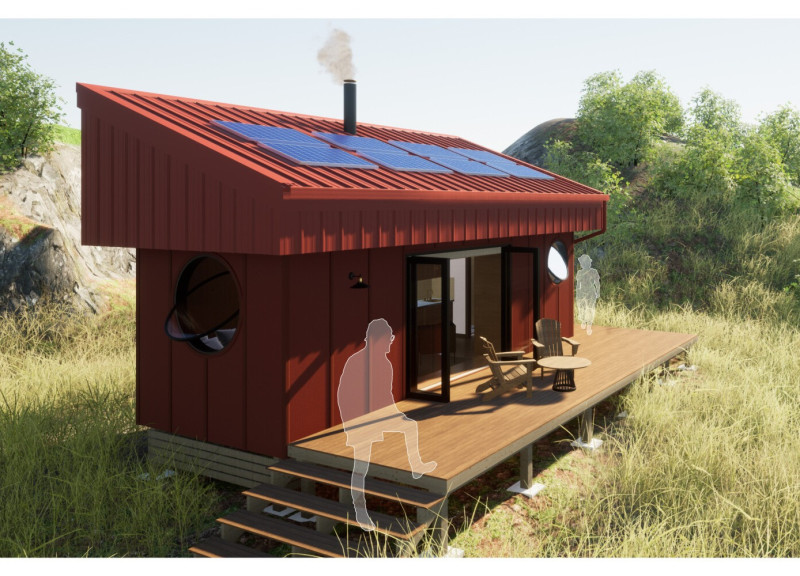5 key facts about this project
At its core, the project is a reflection of contemporary architecture, aligning with modern lifestyles while being responsive to its geographical context. The design employs a variety of materials that work in concert to create a cohesive structure. The use of concrete gives the project a robust foundation, while timber accents introduce warmth and a tactile quality that softens the overall aesthetic. Glass is strategically incorporated to enhance natural light, creating an inviting atmosphere that blurs the boundaries between the interior and the exterior, allowing for an immersive experience of the surrounding landscape.
The project's layout is organized around a central concept that promotes interaction and accessibility. The open-plan configuration encourages a free flow of movement, fostering social engagement among its users. Each space within the architecture has been meticulously designed to serve a specific function while maintaining flexibility, making the building adaptable to varying needs over time. This thoughtful arrangement exemplifies a modern understanding of how spaces can influence human behavior, productivity, and well-being.
One of the standout features of the project is the integration of sustainable design principles. The architecture emphasizes energy efficiency through the use of passive design strategies. The orientation of the building maximizes daylight in occupied spaces while minimizing heat gain during warmer months. This not only reduces reliance on mechanical heating and cooling systems but also enhances the overall comfort of the occupants. The thoughtful incorporation of green roofs and living walls further supports biodiversity and contributes to the local ecosystem, showcasing a commitment to environmental stewardship.
Unique design approaches are evident in the project’s façade, which seamlessly blends aesthetics with functionality. The choice of materials not only serves an artistic purpose but also addresses climatic considerations. The interplay of solid and void creates dynamic visual interest while allowing for ventilation and daylight penetration. This careful consideration of external elements highlights a sophisticated understanding of how architecture can respond to both environmental and social dynamics.
The project represents a synthesis of architectural ideas that resonate with contemporary societal values, emphasizing collaboration between design and nature. Clear lines and simple forms characterize the overall silhouette, allowing the structure to stand as a cohesive unit within its landscape while also encouraging curiosity and exploration. The attention to detail is apparent in the meticulously crafted elements that adorn the building, from the choice of fixtures to the integration of landscaping, each enhancing the user experience.
As you explore the intricacies of this architectural design project, consider delving into the architectural plans, sections, and design approaches that have informed this work. These elements provide deeper insights into the thought processes and innovations that have shaped the project. The overall outcome not only reflects a commitment to quality and sustainability but also invites dialogue about the role of architecture in shaping our environments and communities. For a more comprehensive understanding of this project, take the time to review the detailed presentations that vividly showcase its architectural merits and design philosophies.


























